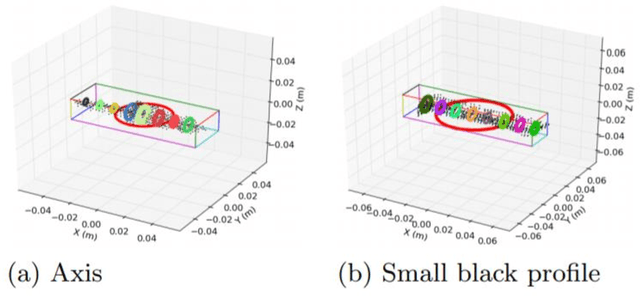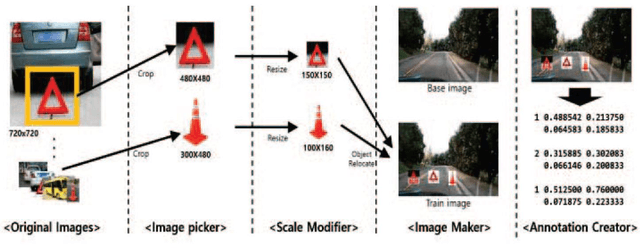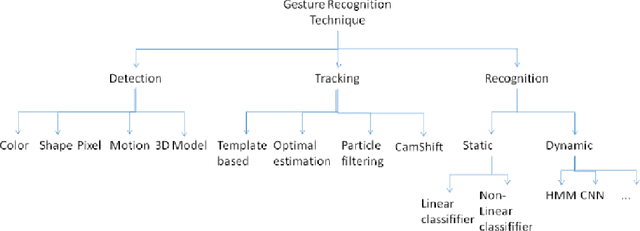Frincy Clement
Textureless Object Recognition: An Edge-based Approach
Mar 10, 2024Abstract:Textureless object recognition has become a significant task in Computer Vision with the advent of Robotics and its applications in manufacturing sector. It has been challenging to obtain good accuracy in real time because of its lack of discriminative features and reflectance properties which makes the techniques for textured object recognition insufficient for textureless objects. A lot of work has been done in the last 20 years, especially in the recent 5 years after the TLess and other textureless dataset were introduced. In this project, by applying image processing techniques we created a robust augmented dataset from initial imbalanced smaller dataset. We extracted edge features, feature combinations and RGB images enhanced with feature/feature combinations to create 15 datasets, each with a size of ~340,000. We then trained four classifiers on these 15 datasets to arrive at a conclusion as to which dataset performs the best overall and whether edge features are important for textureless objects. Based on our experiments and analysis, RGB images enhanced with combination of 3 edge features performed the best compared to all others. Model performance on dataset with HED edges performed comparatively better than other edge detectors like Canny or Prewitt.
Feature CAM: Interpretable AI in Image Classification
Mar 08, 2024Abstract:Deep Neural Networks have often been called the black box because of the complex, deep architecture and non-transparency presented by the inner layers. There is a lack of trust to use Artificial Intelligence in critical and high-precision fields such as security, finance, health, and manufacturing industries. A lot of focused work has been done to provide interpretable models, intending to deliver meaningful insights into the thoughts and behavior of neural networks. In our research, we compare the state-of-the-art methods in the Activation-based methods (ABM) for interpreting predictions of CNN models, specifically in the application of Image Classification. We then extend the same for eight CNN-based architectures to compare the differences in visualization and thus interpretability. We introduced a novel technique Feature CAM, which falls in the perturbation-activation combination, to create fine-grained, class-discriminative visualizations. The resulting saliency maps from our experiments proved to be 3-4 times better human interpretable than the state-of-the-art in ABM. At the same time it reserves machine interpretability, which is the average confidence scores in classification.
A Review of methods for Textureless Object Recognition
Oct 31, 2019


Abstract:Textureless object recognition has become a significant task in Computer Vision with the advent of Robotics and its applications in manufacturing sector. It has been very challenging to get good performance because of its lack of discriminative features and reflectance properties. Hence, the approaches used for textured objects cannot be applied for textureless objects. A lot of work has been done in the last 20 years, especially in the recent 5 years after the TLess and other textureless dataset were introduced. In our research, we plan to combine image processing techniques (for feature enhancement) along with deep learning techniques (for object recognition). Here we present an overview of the various existing work in the field of textureless object recognition, which can be broadly classified into View-based, Feature-based and Shape-based. We have also added a review of few of the research papers submitted at the International Conference on Smart Multimedia, 2018. Index terms: Computer Vision, Textureless object detection, Textureless object recognition, Feature-based, Edge detection, Deep Learning
 Add to Chrome
Add to Chrome Add to Firefox
Add to Firefox Add to Edge
Add to Edge